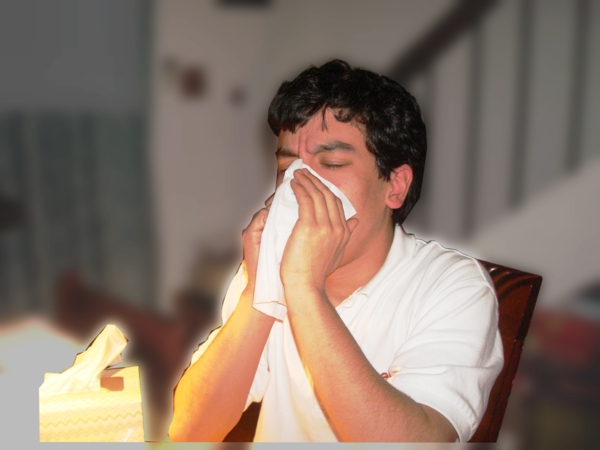On the first day of spring last year I woke up to sunlight streaming through my bedroom windows. I remember jumping out of bed, dressing in my favorite springtime outfit of clothing and strapping a pair of adorable leather sandals to my feet before leaving the house. The air was almost balmy with the promise of an impending summer, with light breezes so warm that I didn’t even grab a jacket.
By the time I got home that evening, that typical springtime weather was a distant memory. The sun had disappeared behind a conglomerate of ominous-looking clouds. I’m fairly certain that I felt sleet mixed in with the rain that was pelting my uncovered arms. Remember those sandals? I may as well have been barefoot for all the protection they didn’t offer. I was reminded of author Mark Twain who once commented, “In the spring I have counted 136 different kinds of weather inside of 24 hours.”
Weather and Seasonal Allergies
The worst part about spring is not the unpredictable weather, but how it wreaks havoc on seasonal allergies. If you or your family suffers from this condition then you know exactly what I’m talking about! Whether an allergy, asthma, or some health problem related to one of those things, here are some ways that the weather affects your seasonal health issues.
- Wind – The more the wind blows, the more it scatters the pollen. The wind is the biggest culprit for eye and respiratory reactions to pollen and reason for hay fever treatments.
- Rain – You’d think that with all the advice about cleaning that rain would wash the pollen from the air you breathe. While it can lower the pollen count in the springtime, the wet conditions promote plant growth. It’s Mother Nature’s very own catch-22.
- Smog – If you live in the city or other area known to have smog, then your chances of suffering from seasonal allergies are far higher. Air pollution inflames the respiratory system, and when pollen is added to the mix you’ll be a wheezing, sneezing mess.
- Warmth – Those warm springtime days are awesome, aren’t they? The trees and plants love them as much as humans do, but instead of celebrating with soccer and baseball games, they just start pollinating that much earlier.
De-Pollinate Inside Your Home
Pollen comes into your home through a variety of ways. There is the pollen that lands on your clothes, hair, and shoes. Pollen comes in on your pets’ fur if you have a dog or a cat. And while it’s impossible to de-pollinate as you enter through the doorway into your home, there is a way to suck the pollen from the air and that’s with an air purification system.
Air purification systems clean the air by pulling it through a dense filter, or sometimes several stages of filtration. The air purifier is designed to pull particles like pollen, dust, pet dander, house dust mites, mold spores, and other tangible allergens from the air. Another type of pollution they pull from the air is gaseous, which includes exhaust smoke, tobacco smoke, and chemical fumes.
So even though your air purifier helps you out currently for your seasonal allergies, you can see how it is useful year round. A lot of air purifiers have settings so you can schedule when they turn on and off. However, some kick on automatically when they detect pollution in your air – much like the HVAC kicks on the heat or air conditioning when your house dips below or rises above a certain temperature. Because HVAC filters also trap particles, they should be cleaned each time you clean the filters in your air purification system, if not more frequently.
Weather Patterns Determine Pollen Levels
How bad your family’s seasonal allegories are largely depends on the weather. And while you can’t eliminate the weather from the environment in which you live, you can eliminate the guesswork out of wondering how many symptoms you might experience. A long, wet winter is an indication of a higher potential for a moldy spring. A windy spring is an indicator for high pollen levels. And a lot of rain means higher counts of ragweed and other hay fever triggers.
Your best bet is to visit your doctor towards the end of winter. That way, when allergy season arrives, along with your box of tissues, container of eye drops, and saline nasal spray, you’ll be armed with any medication that your doctor prescribes. But more importantly, you’ll be armed with the knowledge on how to gain a better understanding of just how bad things might be. Knowing is half the battle!
Becky James-Muth is a freelance writer and graphic designer who works from home in order to spend more time with her firefighter husband and their two sons, who are homeschooled. When a golden retriever puppy joined their family and she started experiencing allergy symptoms, she visited http://www.avoid-nasal-allergies.com/ to find the best ways to remove pet dander without removing her family’s pet. When Becky isn’t writing she enjoys dabbling in the arts whether it’s knitting scarves for cold weather shelters or sketching pictures of her dog, Gingerbelle.

